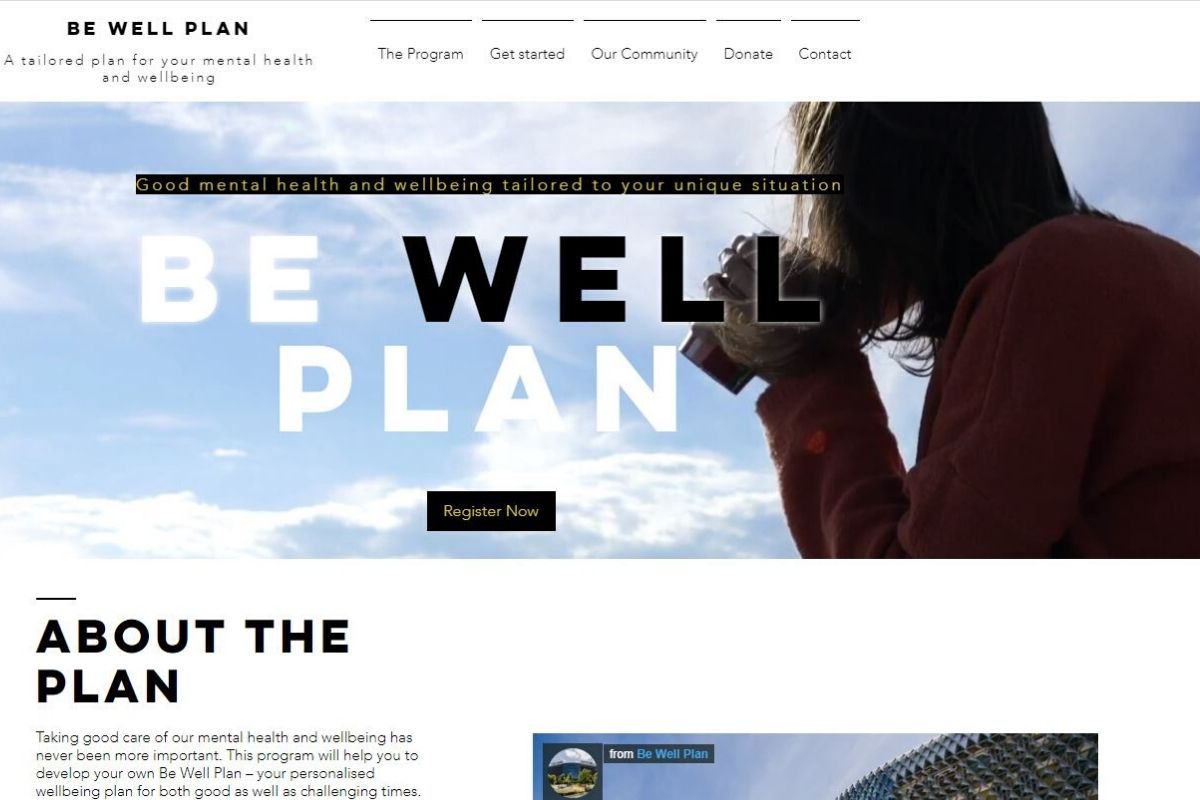
Over the past month I’ve been lucky to have been involved in the delivery and refinement of the Be Well Plan – https://www.bewellplan.com/, a facilitated mental health and wellbeing program developed by the Wellbeing and Resilience Centre at SAHMRI, in collaboration with Flinders University and the Orama Institute.
The program teaches participants how to develop their own mental health and wellbeing plan, drawing on activities shown in the scientific literature to improve psychological health.
The course is delivered over 5 weeks, and each week participants are invited to add, remove, modify or experiment with different wellbeing activities (e.g. thought challenging, gratitude letters, mindful yoga). By the end of the course, each individual has a wellbeing plan in place, with the knowledge and resources necessary to modify that plan in response to the state of their life at the time.
One of the things I like about the program is that it teaches individuals that there are in fact, multiple targets of a personalised wellbeing plan.
You can:
- Work on reducing psychological distress (e.g. stress, anxiety, low mood)
- Subjectively assess your performance in different domains of your life (e.g. work, hobbies) and look to improve your performance
- Work on your physical health
- Identify strengths you have and amplify them or use them in new ways
- Identify barriers in your life (e.g. financial difficulties) and focus on removing those barriers
- Identify resources in your life (e.g. strong social network) and grow them or wield them in different ways
- Focus on predictable short, medium and long-term stressors and develop a plan for dealing with them
This neatly shifts the focus away from a single desired outcome (e.g. happiness) and give participants multiple potential starting points.
Why is this important?
Whilst there is some consistency in the types of activities that are beneficial for our mental health, the timing and focus of implementing them is going to be different for each person.
For example, I don’t have many barriers in my life, so I have the capacity to focus on improving my performance in valued areas of my life such as hobbies or wielding my strengths in different ways. Whereas someone else might be confronting health or housing or financial challenges and needs to implement activities to focus on them first.
It means the program can add value to anyone’s life regardless of the status of their life at that time.
So when you think about how you can improve your life, remember that there isn’t a single outcome that you must focus on. The interconnectivity between our mood, health, performance, strengths, barriers, resources and stressors means that we can look to modify or change any one of them and the effects will reverberate through our lives.
If you like the sound of the program, check out how you can access it via the web-link included. Also keep your eye out for this program being offered to Flinders University Students over the next couple of months.

